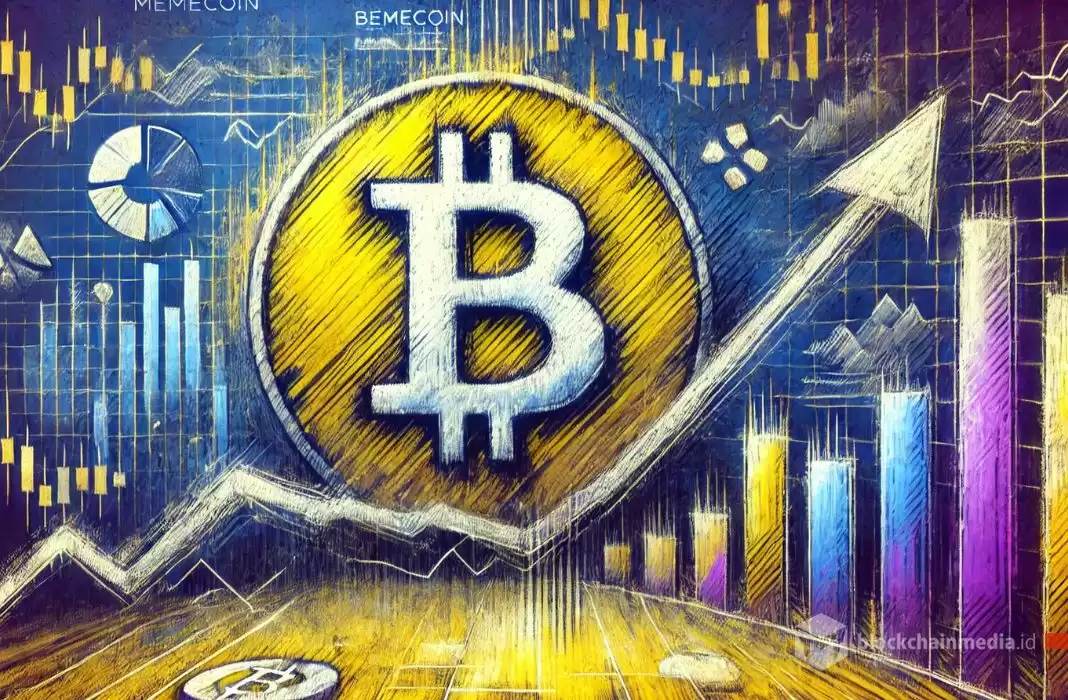-
 Bitcoin
Bitcoin $117700
-1.00% -
 Ethereum
Ethereum $4458
-3.91% -
 XRP
XRP $3.119
0.14% -
 Tether USDt
Tether USDt $1.001
-0.02% -
 BNB
BNB $836.6
-1.56% -
 Solana
Solana $189.5
-3.90% -
 USDC
USDC $0.9998
-0.02% -
 Dogecoin
Dogecoin $0.2335
1.29% -
 Cardano
Cardano $0.9642
1.51% -
 TRON
TRON $0.3539
-1.19% -
 Hyperliquid
Hyperliquid $47.41
-1.84% -
 Chainlink
Chainlink $21.92
-3.28% -
 Stellar
Stellar $0.4286
-0.23% -
 Sui
Sui $3.724
-3.29% -
 Bitcoin Cash
Bitcoin Cash $594.8
-0.78% -
 Ethena USDe
Ethena USDe $1.001
0.04% -
 Hedera
Hedera $0.2501
-2.06% -
 Avalanche
Avalanche $23.96
-4.87% -
 Litecoin
Litecoin $119.0
-2.32% -
 Toncoin
Toncoin $3.473
0.82% -
 UNUS SED LEO
UNUS SED LEO $9.596
0.17% -
 Shiba Inu
Shiba Inu $0.00001301
-0.39% -
 Uniswap
Uniswap $11.03
-0.25% -
 Polkadot
Polkadot $3.935
-2.62% -
 Dai
Dai $1.000
0.01% -
 Bitget Token
Bitget Token $4.564
-1.76% -
 Cronos
Cronos $0.1512
-4.11% -
 Ethena
Ethena $0.7306
-1.09% -
 Pepe
Pepe $0.00001087
-2.68% -
 Aave
Aave $300.2
-4.00%
What does the currency circle perpetual contract mean?
Perpetual contracts offer distinct advantages, such as indefinite hold periods and leverage options, although their complexity and risk of loss must be meticulously considered.
Dec 03, 2024 at 02:18 pm

What Does the Currency Circle Perpetual Contract Mean?
Introduction
A perpetual contract is a financial instrument that allows traders to speculate on the future price of an underlying asset without owning the asset itself. Perpetual contracts are similar to futures contracts, but they do not have an expiration date. This means that traders can hold perpetual contracts indefinitely or until they decide to close their positions.
How Do Perpetual Contracts Work?
Perpetual contracts are traded on a decentralized exchange (DEX), which is a platform that allows users to trade cryptocurrencies directly with each other without going through a centralized intermediary. DEXs use smart contracts to facilitate trading, which are self-executing contracts that enforce the terms of an agreement between two parties.
When a trader opens a perpetual contract, they are essentially betting on whether the price of the underlying asset will go up or down. If the trader believes that the price will go up, they will open a long position. If the trader believes that the price will go down, they will open a short position.
Traders can use leverage when trading perpetual contracts, which means that they can borrow funds from the DEX to increase their potential profits. However, leverage also increases the trader's risk of loss.
Advantages of Perpetual Contracts
There are several advantages to trading perpetual contracts:
- No Expiration Date: Perpetual contracts do not have an expiration date, which means that traders can hold their positions indefinitely. This gives traders the flexibility to trade on their own time frame and to avoid the risk of being forced to close their positions at an inopportune time.
- Leverage: Perpetual contracts allow traders to use leverage, which can increase their potential profits. However, traders should be aware that leverage also increases their risk of loss.
- Liquidity: Perpetual contracts are traded on DEXs, which have a high level of liquidity. This means that traders can easily enter and exit positions without having to worry about finding a counterparty.
Disadvantages of Perpetual Contracts
There are also some disadvantages to trading perpetual contracts:
- Risk of Loss: Perpetual contracts are a leveraged product, which means that traders can lose more money than they initially invested.
- Complexity: Perpetual contracts can be complex to understand, especially for beginner traders.
- Regulation: Perpetual contracts are not regulated by any government agency, which means that there is no protection for traders in the event of fraud or theft.
How to Trade Perpetual Contracts
If you are interested in trading perpetual contracts, there are a few things you need to do to get started:
- Open an Account on a DEX: The first step is to open an account on a DEX that offers perpetual contracts. There are several different DEXs to choose from, so you will need to compare the fees, features, and security measures of each DEX before selecting one.
- Fund Your Account: Once you have opened an account on a DEX, you will need to fund your account with cryptocurrency. You can do this by depositing cryptocurrency from your own wallet or by purchasing cryptocurrency using a credit card or debit card.
- Place an Order: Once you have funded your account, you can start placing orders for perpetual contracts. To place an order, you will need to specify the underlying asset, the contract size, the leverage you want to use, and the price at which you want to buy or sell the contract.
- Monitor Your Position: Once you have placed an order for a perpetual contract, you will need to monitor your position regularly. This means checking the price of the underlying asset and making sure that your position is still profitable. You may also need to adjust your leverage or close your position if the market moves against you.
Disclaimer:info@kdj.com
The information provided is not trading advice. kdj.com does not assume any responsibility for any investments made based on the information provided in this article. Cryptocurrencies are highly volatile and it is highly recommended that you invest with caution after thorough research!
If you believe that the content used on this website infringes your copyright, please contact us immediately (info@kdj.com) and we will delete it promptly.
- Kazakhstan's Crypto Leap: Bitcoin ETF and Central Asia's Digital Finance Future
- 2025-08-13 12:45:19
- BlockDAG Presale Blazes Past $371M: Fundraising Frenzy Fuels Crypto Sensation
- 2025-08-13 13:05:21
- Meme Coins: Chasing the 2025 Surge – Which Will Moonshot?
- 2025-08-13 10:25:23
- Bitcoin's Wild Ride: Rally, Pullback, and What's Next
- 2025-08-13 10:25:23
- Bitcoin, Bitmax, and Institutional Demand: A New Era of Crypto Investment
- 2025-08-13 10:45:12
- Solana, ROAM, and Airdrops: What's the Buzz in 2025?
- 2025-08-13 11:35:13
Related knowledge

Is it possible to adjust the leverage on an open position on KuCoin?
Aug 09,2025 at 08:21pm
Understanding Leverage in KuCoin Futures TradingLeverage in KuCoin Futures allows traders to amplify their exposure to price movements by borrowing fu...

What cryptocurrencies are supported as collateral on KuCoin Futures?
Aug 11,2025 at 04:21am
Overview of KuCoin Futures and Collateral MechanismKuCoin Futures is a derivatives trading platform that allows users to trade perpetual and delivery ...

What is the difference between realized and unrealized PNL on KuCoin?
Aug 09,2025 at 01:49am
Understanding Realized and Unrealized PNL on KuCoinWhen trading on KuCoin, especially in futures and perpetual contracts, understanding the distinctio...

What different order types are available to use on KuCoin Futures?
Aug 13,2025 at 11:35am
Understanding Order Types on KuCoin FuturesKuCoin Futures offers a comprehensive range of order types to accommodate different trading strategies and ...

How does KuCoin Futures compare against Binance Futures in terms of features?
Aug 09,2025 at 03:22am
Trading Interface and User ExperienceThe trading interface is a critical component when comparing KuCoin Futures and Binance Futures, as it directly i...

How can I manage risk when applying high leverage on KuCoin?
Aug 13,2025 at 11:35am
Understanding High Leverage and Its Implications on KuCoinHigh leverage in cryptocurrency trading allows users to control larger positions with a rela...

Is it possible to adjust the leverage on an open position on KuCoin?
Aug 09,2025 at 08:21pm
Understanding Leverage in KuCoin Futures TradingLeverage in KuCoin Futures allows traders to amplify their exposure to price movements by borrowing fu...

What cryptocurrencies are supported as collateral on KuCoin Futures?
Aug 11,2025 at 04:21am
Overview of KuCoin Futures and Collateral MechanismKuCoin Futures is a derivatives trading platform that allows users to trade perpetual and delivery ...

What is the difference between realized and unrealized PNL on KuCoin?
Aug 09,2025 at 01:49am
Understanding Realized and Unrealized PNL on KuCoinWhen trading on KuCoin, especially in futures and perpetual contracts, understanding the distinctio...

What different order types are available to use on KuCoin Futures?
Aug 13,2025 at 11:35am
Understanding Order Types on KuCoin FuturesKuCoin Futures offers a comprehensive range of order types to accommodate different trading strategies and ...

How does KuCoin Futures compare against Binance Futures in terms of features?
Aug 09,2025 at 03:22am
Trading Interface and User ExperienceThe trading interface is a critical component when comparing KuCoin Futures and Binance Futures, as it directly i...

How can I manage risk when applying high leverage on KuCoin?
Aug 13,2025 at 11:35am
Understanding High Leverage and Its Implications on KuCoinHigh leverage in cryptocurrency trading allows users to control larger positions with a rela...
See all articles

























































































